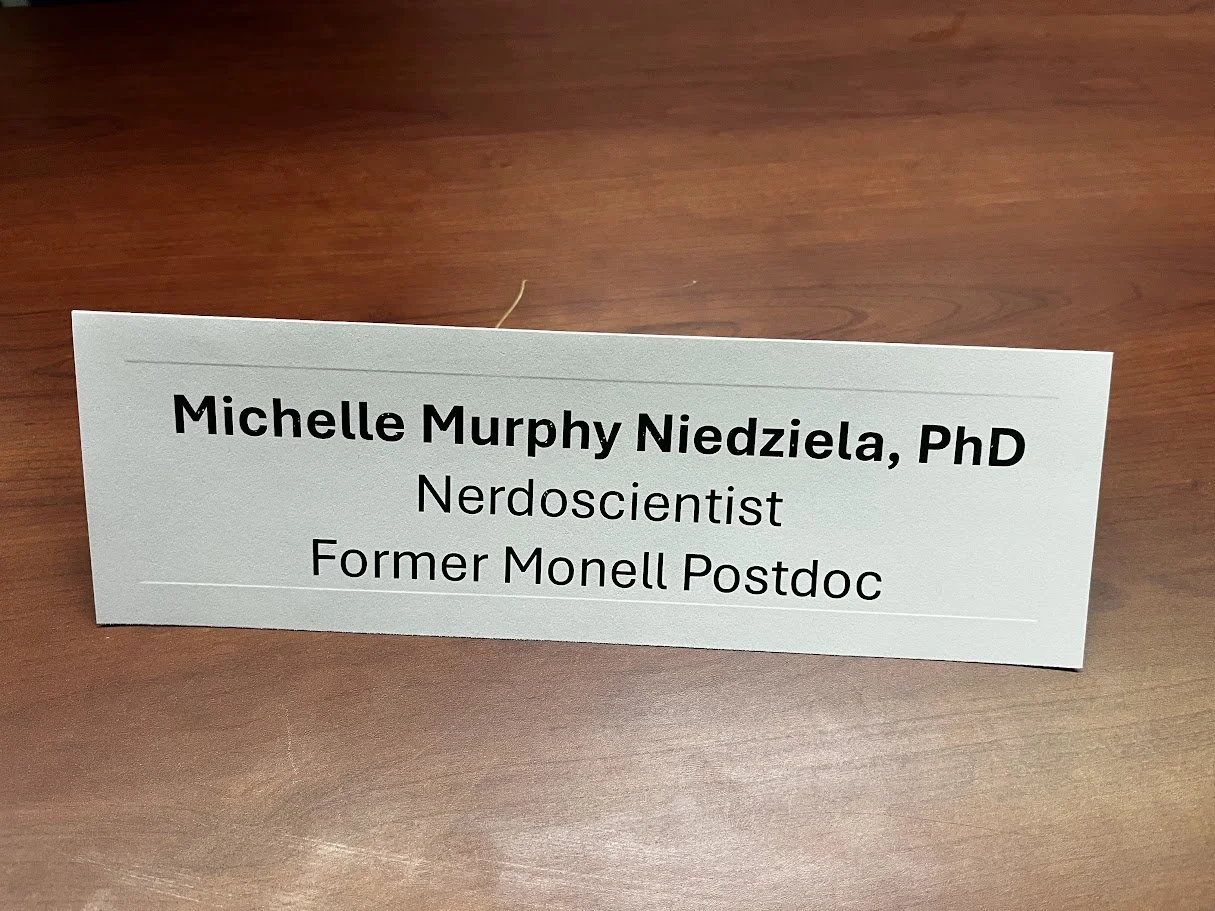So You Want to Learn Neuroscience? Start Here—But Also, Let’s Talk.
I've been asked by at least five different people this week for book recommendations to learn neuroscience, especially from those working in marketing, UX, product development, and consumer research. And I totally get it, the brain IS fascinating. The idea of tapping into real reactions, getting “under the hood” of decision-making, “reading minds”, and predicting behavior is understandably appealing.
So I usually do send a list. With some caveats and context. (You’ll find an expanded one below, don’t worry, I’ve got you.)
But here’s the thing I don’t always say out loud: I really struggle to answer this question.
Because learning neuroscience isn’t just about reading a few books. It’s not just a checklist of required reading before you get to call yourself an expert. Neuroscience is a science. A complex, evolving, sometimes messy, and always humbling science.
Let me give you a bit of context:
I spent 3 years getting my bachelor's degree, while juggling work in a neuroscience lab, a clinical psychology lab, and part-time shifts at a mental hospital. Then I spent another 7.5 years earning my master’s and PhD. After that, I completed a 3-year postdoc at the Monell Chemical Senses Center, where I expanded my research into human behavior, particularly how sensory and psychological processes shape perception and decision-making… All that included coursework, experimental research, conference presentations, peer-reviewed publications, and more late-night stats debugging and hovering over expensive microscopes than I care to remember.
I’ve now been working in industry for nearly two decades as a behavioral neuroscientist, partnering with global companies on everything from product innovation to consumer experience design. I’m proud to be considered a subject matter expert.
Me at my 2008 PhD graduation at Purdue University.
And yet… I still get imposter syndrome.
Meanwhile, I once met a recent college grad who called himself a “neuroscience expert” after getting a bachelor’s degree and reading a few books and papers. I’ve shared speaking panels with folks introduced as “neuroscientists” simply because their startups sold EEG headsets. One, famously, had dropped out of a psych undergrad program and built his company on wild claims about ad testing.
Let me be clear: I love that people are curious. I admire that folks want to learn and apply brain science. We need that interest! But what concerns me is when people mistake familiarity for expertise, especially in consumer neuroscience (aka neuromarketing).
Reading books is a great first step. But it doesn’t make you an expert. And worse, if you apply that knowledge without scientific grounding or methodological rigor, it can do more harm than good, especially in a field where even the tools themselves are still being validated.
Take EEG, for example.
There’s a great post I recently re-shared on LinkedIn from Dr. Beno:
“Let’s be brutally honest: the quality of most EEG data being used in ML today is borderline unusable… dry electrodes, poor placement, no impedance checks—most of it is skin noise. Garbage in, garbage out.”
True. But that’s just one of the many issues.
Let’s say your EEG data was reliable. Well, you still need to ask: Is the output actually measuring what you think it is? Machine learning can find patterns, but if your psychological construct is vague and there’s no ground truth, you risk overfitting to noise and calling it insight.
(As I often say: Phrenology was reliable. Still total pseudoscience.)
The deeper issue is construct validity, which is the foundational question in any science: What are we really measuring? Lisa Feldman Barrett calls this “the emotion paradox”, and it applies just as well to neuroscience overall. Just because we think about the brain doesn’t mean we understand it. And just because a startup or whitepaper makes brain claims doesn’t mean they’ve earned your trust.
Neurowashing
For example, a recent publication from a group of 47 authors representing both major tech companies and universities. The paper was published in IEEE, an engineering-focused outlet, not a neuroscience journal. Despite claiming to systematically map AI architectures to functional regions of the human brain, the neuroscience content was shallow at best. The section on the limbic system, for instance, was barely a paragraph, citing only a general textbook and omitting key structures and mechanisms. This isn’t an isolated incident, IEEE has a reputation for publishing papers that make bold claims about neuroscience, emotion, or cognition, often without including any actual neuroscientists or psychologists as authors. These kinds of publications perpetuate neuromyths and confuse well-meaning practitioners who assume peer-reviewed = scientifically sound. In this case, it’s not. This is neurowashing.
Like greenwashing in sustainability, neurowashing happens when people wrap shaky ideas in brainy language to make them sound smart. And those of us who’ve spent the last 20 or so years fighting off these myths? We’re tired. But we’re also here to help.
📚 Nerdoscientist’s Recommended Reading List (not exhaustive by any means, and I may change my recommendations based on context, etc.)
⭐ For Curious Beginners
The Brain That Changes Itself – Norman Doidge
Livewired – David Eagleman
How the Mind Works – Steven Pinker
Behave – Robert Sapolsky
🧠 For Aspiring Neuroscientists (Textbooks can be less accessible, but very informative)
Neuroscience: Exploring the Brain – Bear, Connors & Paradiso
Principles of Neural Science – Kandel et al. (massive, dense, definitive)
Fundamental Neuroscience – Squire, Berg, Bloom, et al.
From Neuron to Brain – Nicholls, Martin, Wallace, Fuchs
Neuroscience – Purves, Augustine, Fitzpatrick, et al.
The Synaptic Organization of the Brain – Shepherd
Harvard’s Fundamentals of Neuroscience (free edX course)
MIT OCW Intro to Neuroscience
📊 For Applied Consumer Neuroscience, aka “Neuromarketing” (It can be a shady field with a lot of misinformation and overgeneralizations, so reader beware)
Neuromarketing for Dummies – Steve Genco (Not just for dummies, actually great for everyone!)
The Buying Brain – A.K. Pradeep (good for industry buzzwords, but read critically)
Neuromarketing: Exploring the Brain of the Consumer – Leon Zurawicki
The Influential Mind – Tali Sharot
Foundations of Neural Decision Making – Platt & Glimcher
📚 Pop Science Picks (But Read with a Critical Eye)
Pop science books are fun, accessible, and often the gateway into neuroscience—but be cautious. Many are written to sell an angle and may simplify or even distort the science:
Predictably Irrational – Dan Ariely
Anything by Malcolm Gladwell
How Emotions Are Made – Lisa Feldman Barrett
The Brain – David Eagleman
The Man Who Mistook His Wife for a Hat – Oliver Sacks and all Sacks other books (my personal gateway drug to neuroscience… fascinating case studies!)
📘 Behavioral Design Book List
Looking to deepen your understanding of behavioral science? Check out this expert-curated list from Habit Weekly:
👉100 Best Behavioral Design Books
🔍 Bonus Tip: Stay Current with Research
Want to stay up-to-date without digging through journal databases every day? Set up Google Scholar Alerts for topics you care about. Some of mine include:
“consumer neuroscience”
“psychophysiology”
“measuring emotions”
You’ll get the latest studies delivered right to your inbox.
Neuroscience is powerful, but it’s not a shortcut. If your team is exploring ways to use neuroscience, behavioral science, or cognitive tools to drive innovation, understand consumers, or test products, please don’t go it alone.
📬 Reach out. I’ve helped companies big and small integrate neuroscience responsibly and effectively, from strategy and research design to workshops and team education. As Nerdoscientist, I translate the complex science into real-world impact and I’d love to help you do it right.




